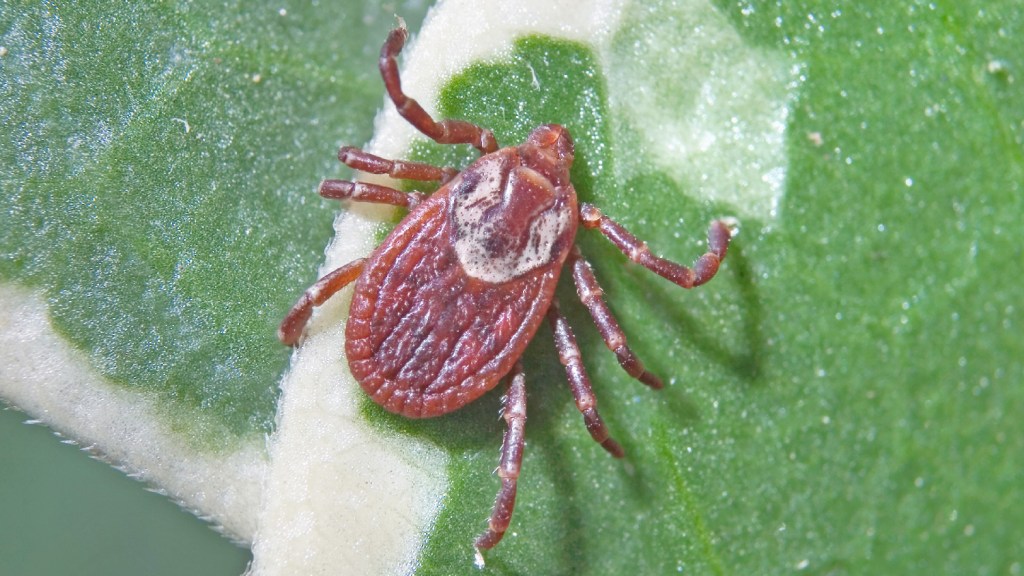Precautions can help prevent tick and mosquito illnesses
Published 12:00 am Friday, June 30, 2023

- The American dog tick is found in grassy areas with little tree cover and are active from April to September. Its bite transmits Rocky Mountain Spotted Fever. (Submitted Photo)
Spray, light clothes are recommended
COLUMBUS – This summer, Ohio Department of Health (ODH) Director Bruce Vanderhoff, MD, MBA is encouraging people to take precautions to prevent tick and mosquito bites and the diseases they may carry.
Most diseases in Ohio that are caused by the bite of infected ticks happen between spring and fall when ticks are most active.
Trending
The most common disease spread by ticks in Ohio is Lyme disease, which has been increasing in Ohio in recent years. There were 552 cases reported last year and 121 so far this year.
Mosquitoes are also active during warmer months and some can carry diseases. Last year, there were seven West Nile virus cases, including one death, and 13 La Crosse virus cases in Ohio.
Most people infected with these viruses do not have symptoms, or have only mild symptoms like fever, headache, nausea and vomiting. In rare cases, they can cause severe disease.
“Of course, we want Ohioans to enjoy the outdoors in the summer months as part of an active, healthy lifestyle, but you should be thinking about protection against ticks and mosquitoes,” said Vanderhoff. “Taking simple precautions can prevent potentially serious diseases.”
ODH tracks tick- and mosquito-borne disease activity. Being aware of this activity in your area allows you to take steps to protect yourself and others.
Tips to avoid mosquito bites include:
Trending
• Use EPA-registered repellents when going outdoors according to label instructions.
• Wear light-colored clothing, long sleeves, long pants, and socks when outdoors.
• Consider avoiding outdoor activities during peak mosquito biting hours (dusk to dawn).
• Mosquitoes may bite through thin clothing, so spraying clothes with an EPA-registered repellent will give extra protection.
• Help reduce the number of mosquitoes around your home by emptying standing water on a regular basis from flowerpots, gutters, buckets, pool covers, pet water dishes, discarded tires and bird baths.
Tips to protect yourself from ticks include:
• Avoid wooded and brushy areas with high grass and leaf litter.
• Walk in the center of trails.
• Use insect repellents registered by the U.S. Environmental Protection Agency (EPA) labeled for use against ticks on exposed skin for protection that lasts several hours. Always follow the product label.
• Tuck pant legs into socks or boots and tuck shirts into pants to keep ticks on the outside of your clothing.
• Light-colored clothing will help you spot ticks more easily.
• If you find a tick attached to your skin, the best way to remove it is to use fine-tipped tweezers to grasp the tick as close to the skin’s surface as possible. Pull away from your skin with steady, even pressure. Wash your hands and the bite area with soap and water.
• If you have been bitten by a tick, watch for symptoms such as fever/chills, aches and pains, or rash. See your healthcare provider if you experience any of these symptoms.
For more information on ticks, mosquitoes, and the diseases they can carry, visit
www.odh.ohio.gov/ticks and www.odh.ohio.gov/mosquitoes.
The Ohio Department of Health’s mission is advancing the health and well-being of all Ohioans by transforming the state’s public health system through unique partnerships and funding streams; addressing the community conditions and inequities that lead to disparities in health outcomes and implementing data-driven, evidence-based solutions.





